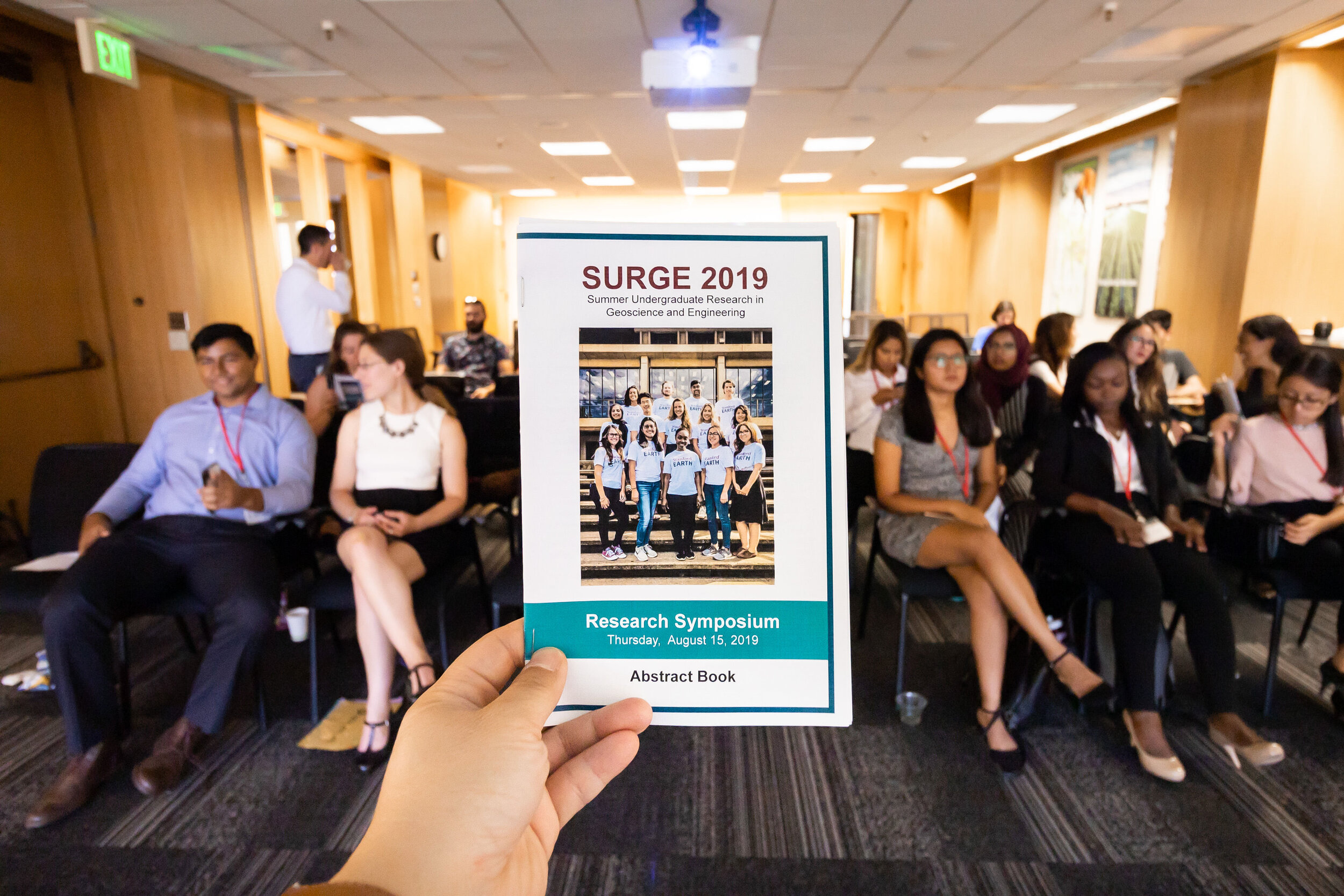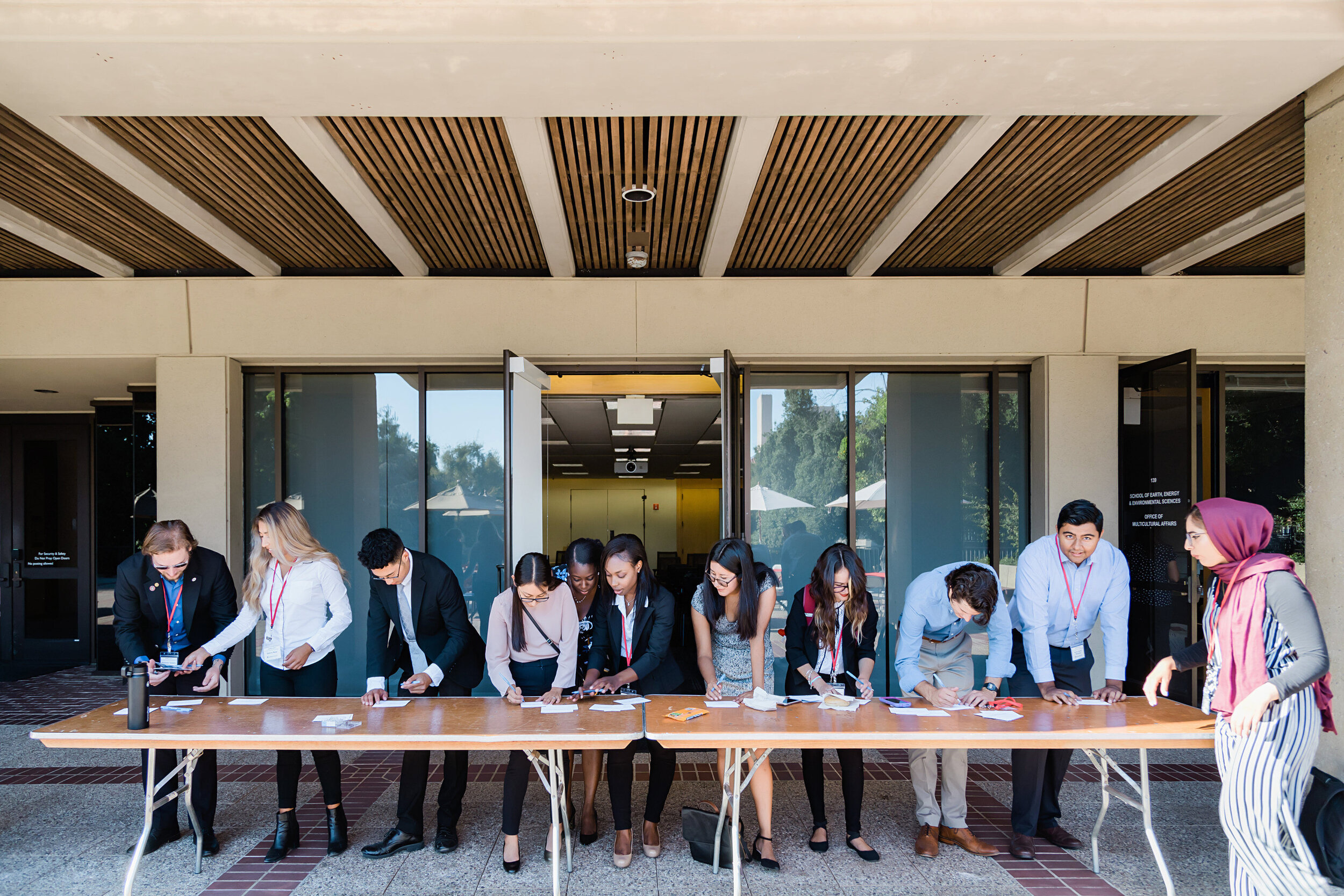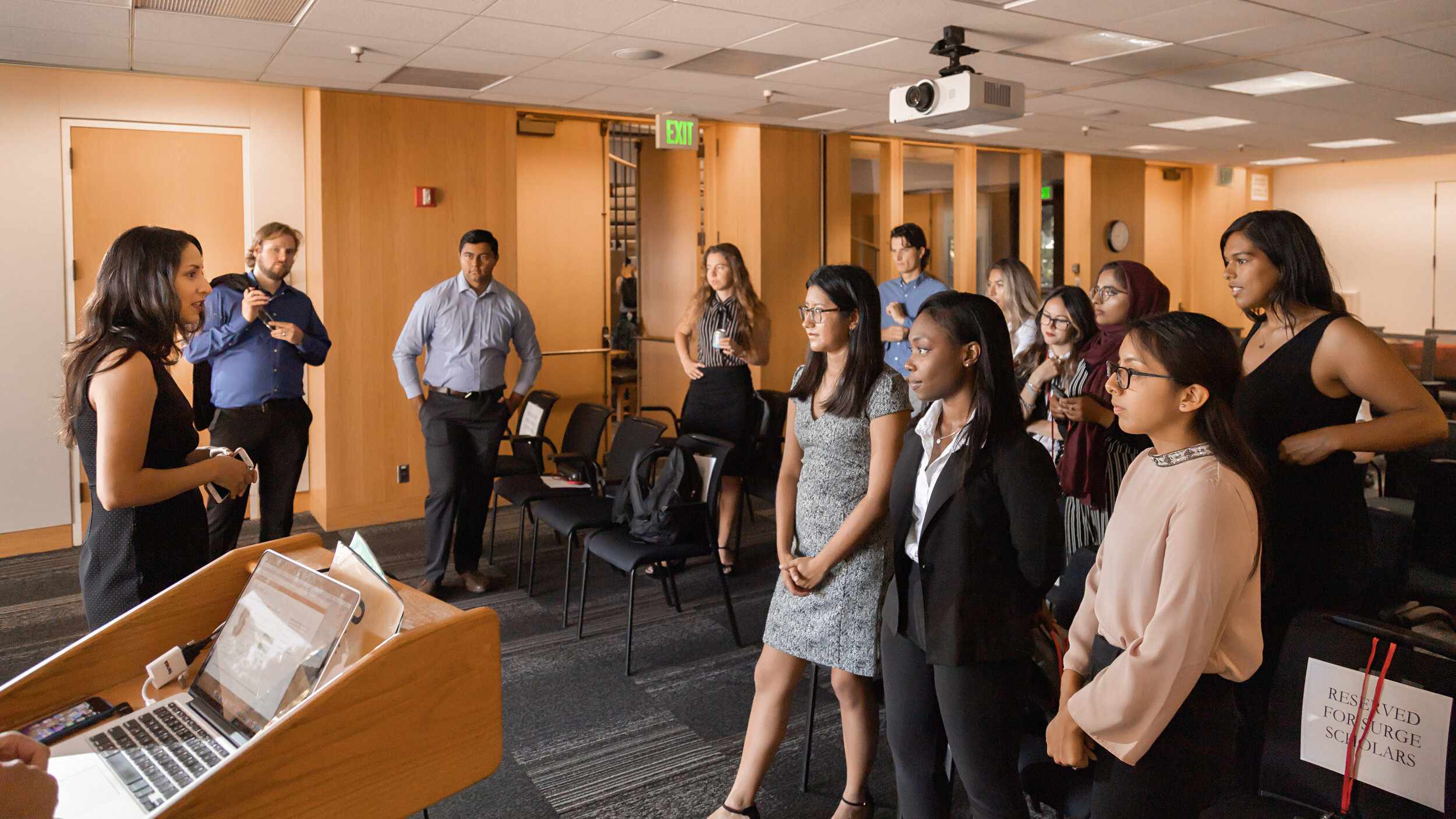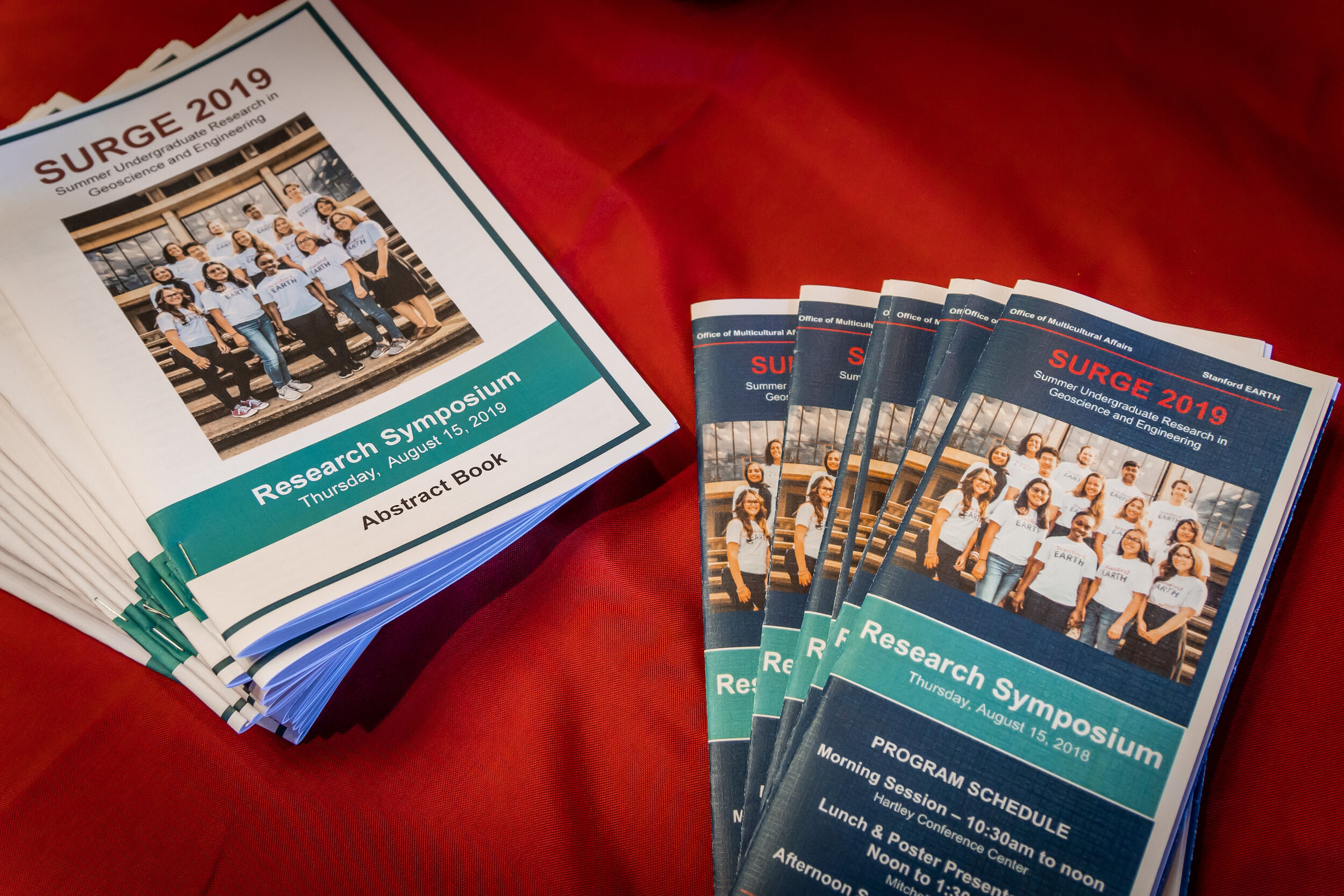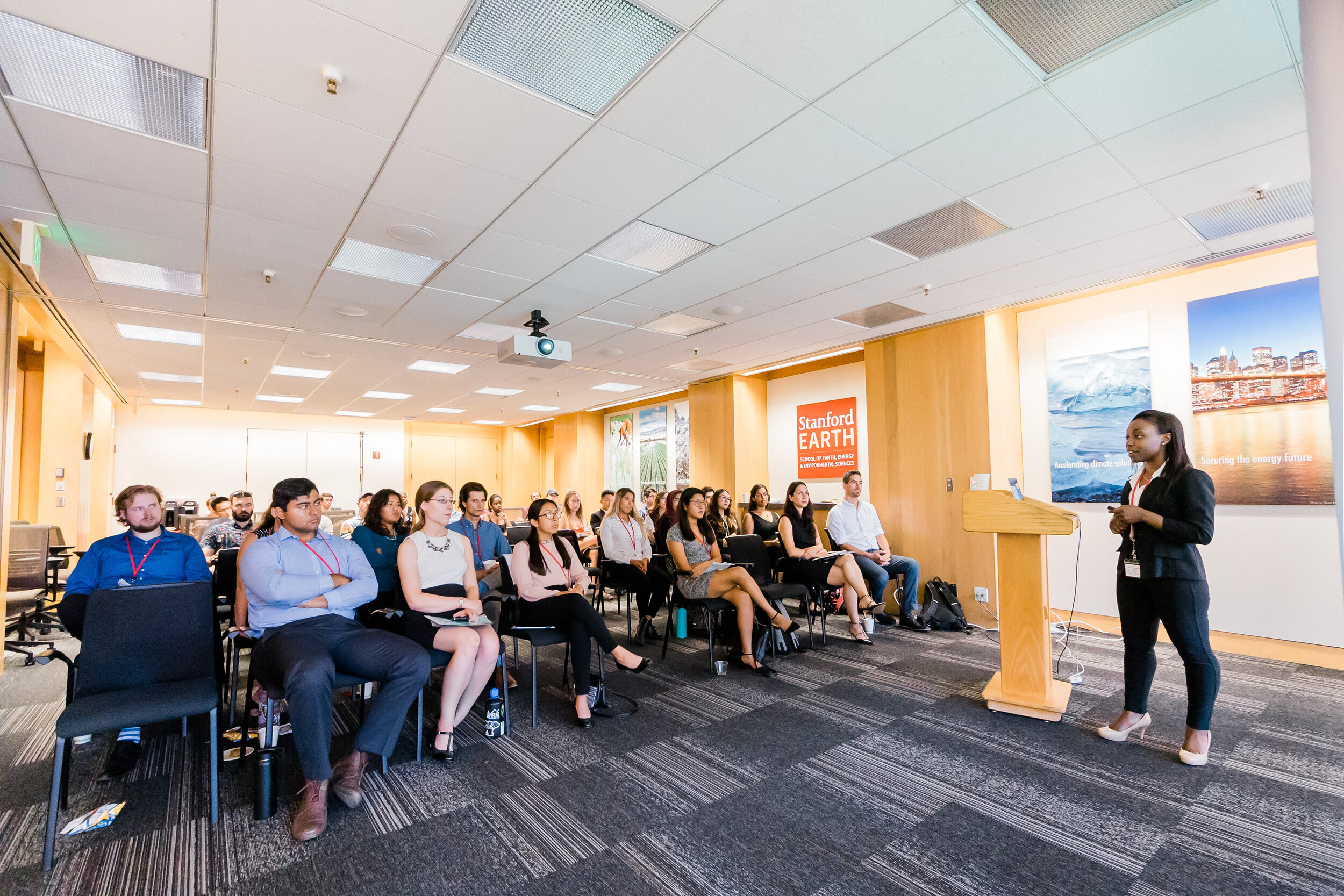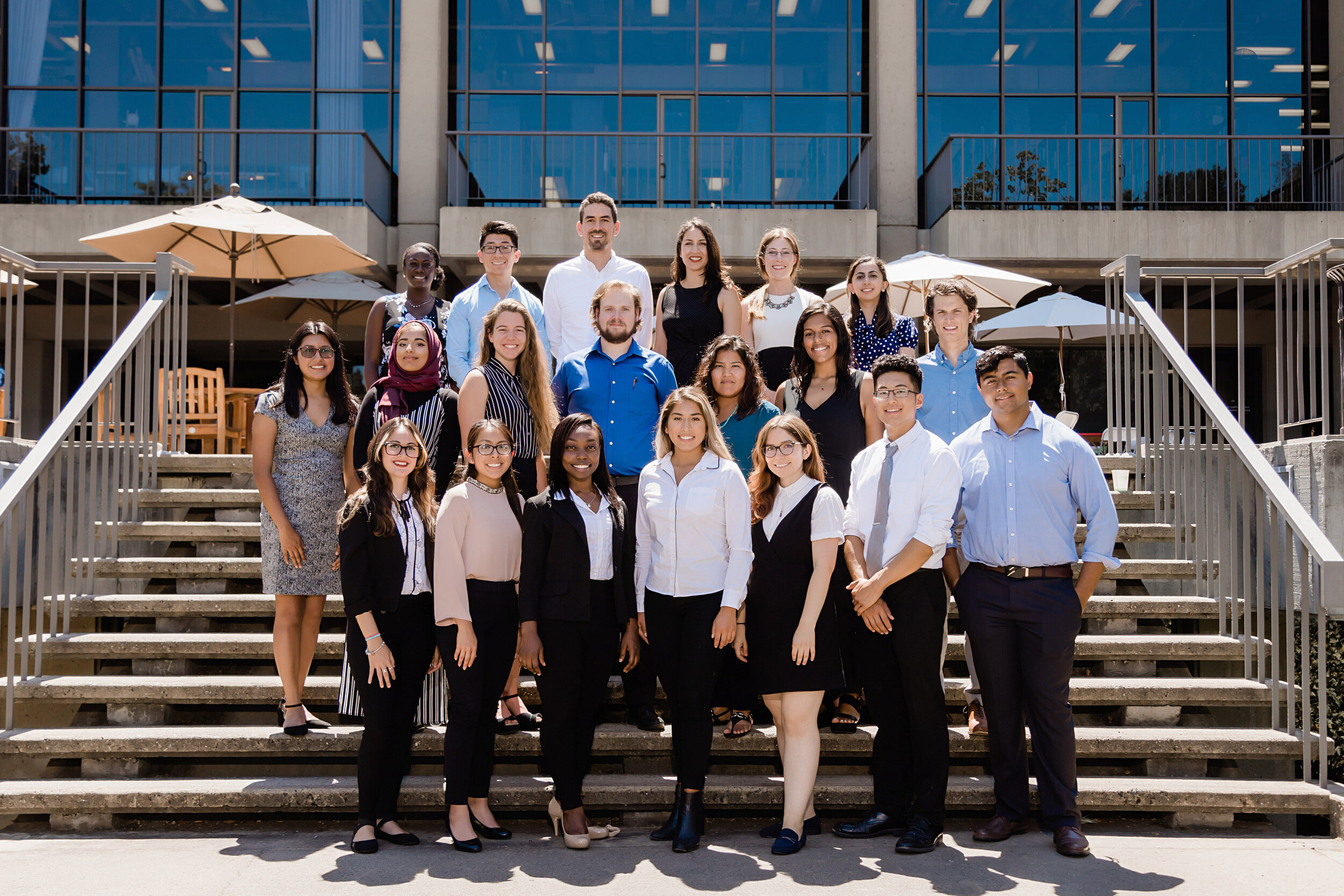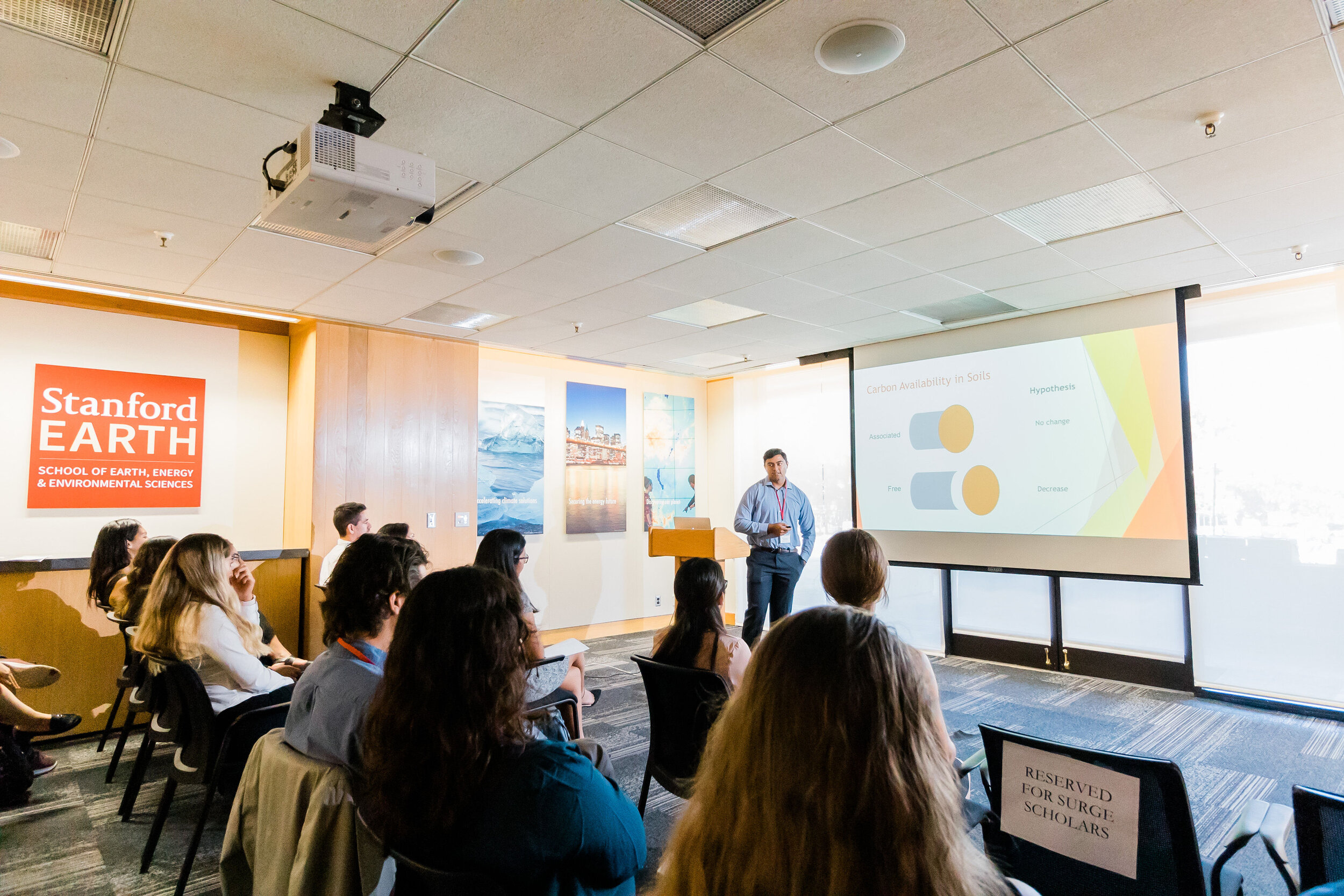Stanford SURGE Program
As a Stanford SURGE (Summer Undergraduate Research in Geoscience and Engineering) Scholar, I was matched with a faculty member from the School of Earth, Energy and Environmental Sciences to work on a research project during the eight-week program in 2019. SURGE also included workshops on preparing for the GRE, applying to graduate school, and understanding geoscience and engineering careers. The program culminated with a research symposium at Stanford, where scholars presented results from their summer projects to faculty, mentors, and colleagues.
I worked with Dr. Matthew Malkowski (Acting Assistant Professor) and Colin White (PhD candidate) in the Stanford Project in Deep-water Depositional Systems (SPODDS) Group under the supervision of principal investigator, Dr. Steve Graham. The Alaska Range hosts North America's highest topography and much of the sediment removed from the growth of the Alaska Range is carried out to the Bering Sea basin along the Kuskokwim and Yukon Rivers. Our project addresses the uplift and unroofing history of the Alaska Range and how the Yukon-Kuskokwim drainage evolved in response to flat-slab subduction and exhumation of the Alaska Range.
My project utilized 24 sandstone samples from cores of three different submarine basins in the Bering Sea: Norton, Navarin, and St. George. These samples were separated for zircon extraction by crushing/pulverizing, hydraulic sorting using a Gemini table, magnetically separated with a Franz, and MEI heavy liquid separation. Samples were analyzed at the Arizona LaserChron Center on the Element2 and Nu Plasma mass spectrometers. U-Pb age populations obtained were compared with samples previously collected along modern drainages as well as existing literature on hinterland source terranes. Interpretations of provenance were also made by way of point counting sandstone samples using the Gazzi-Dickinson method.






